





Pulpitis – a "nervous" disease
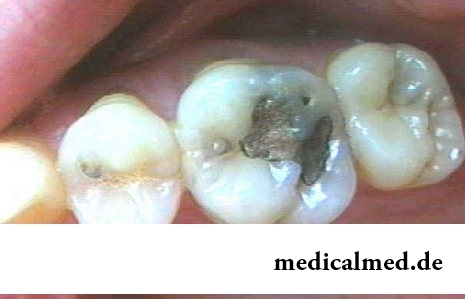
Everything begins with small, almost imperceptible hole on tooth to which in the beginning you did not even pay attention. And even if noticed, the campaign to the favourite dentist is postponed for a week – another, and there vital problems will twirl, and … one night, you wake up from a twinge of toothache which just forces you to knock nevertheless in the morning in a dental office. And the doctor, having examined an oral cavity, announces: "Yes at you, old man, a pulpitis".
The pulpitis is a consequence of the started caries, a pulp inflammation (a neurovascular bunch of tooth). A characteristic sign of a pulpitis is the accruing, throbbing pain in tooth, especially pronounced at night.
Etiology (reason) of a pulpitis
Inflammatory process begins because parts of food, causative organisms which provoke inflammatory process get to the pulp cavity formed as a result of the started caries. Though in dental practice cases when the so-called retrograde pulpitis is observed meet, i.e. infection happens through an apical opening of the channel of a fang.
Pulpitis symptoms
The pulpitis which symptoms are rather various can be classified as follows:
The pulpitis is chronic:
- the fibrous chronic pulpitis – often arises upon transition of an acute pulpitis to a chronic inflammation. It is characterized by change of a twinge of toothache with the dentagra arising from external irritants. There can be attacks of dull ache of tooth. The fibrous chronic pulpitis can proceed also without the described symptoms;
- the hypertrophic chronic pulpitis – most often occurs at young people and children with a severe form of caries. Is followed by bleeding and painful feelings from mechanical influence;
- the gangrenous chronic pulpitis – proceeds with rather strong painful feelings. At the same time the affected teeth sharply react to hot temperature condition.
The acute pulpitis is subdivided into two main types:
- the focal pulpitis is an initial stage of an inflammation of a pulp. Pain is short-term, periodic, amplifies at influence of irritants.
- diffusion pulpitis – the most severe form. Pain sharp and intolerable. The painful resonance is possible in a temporal part, ears, an eye-socket and in jaws. Hotter is an irritant, and cold (for example, water) dulls pain.
The necrosis of a pulp is an irreversible form of a pulpitis. At it the pulp completely dies off. The necrosis of a pulp can be a consequence of mechanical influence (blow) when there is a rupture of a neurovascular bunch
The acute pulpitis which symptoms are more brightly expressed forces the patient to address the stomatologist quicker.
Pulpitis at children's age
Physiological features of a children's organism exert impact on clinic of a pulpitis. The acute pulpitis at children, especially in teeth with not created roots, often wears a purulent uniform and is followed by an inflammation of a peridont. Percussion of teeth (percussion) is very painful. And at the same time mobility of the affected tooth is sometimes observed. The pulpitis at children, as a rule, proceeds and is treated as well as adults. Special difficulty is made by collecting the anamnesis because of emotional perception by the child of pain.
Treatment of a pulpitis
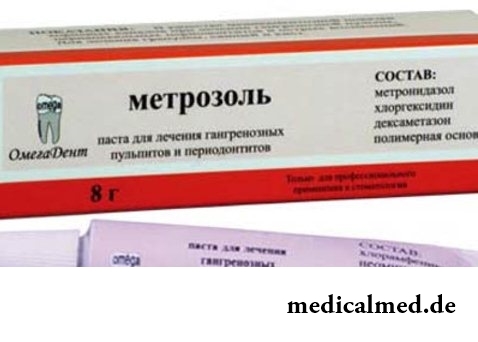
Treatment of a pulpitis is made depending on stages of a disease and a form of a disease. Modern drugs are able to keep the collapsing tooth tissues at the initial stage of a disease at the timely address to the doctor. In cases when the disease came far in the development, the doctor makes a depulpirovaniye (removal of a nerve) with the subsequent cleaning of channels and their sealing.
If earlier stomatologists most often extracted tooth with the damaged pulp because of a difficult procedure of a depulpirovaniye, then today's methods of treatment of a pulpitis allow tooth to continue performance of the functions.
Today there are two traditional methods of treatment of a pulpitis:
Biological (conservative) – a method when which using viability of a pulp of tooth remains. As a rule, the biological method is applied at accidentally opened pulp cavity, at a traumatic pulpitis, at an inflammatory disease of a pulp. This method is most effective at initial stages of a disease. Procedures of a biological method:
- local anesthesia;
- removal of the struck fabrics;
- use of medical paste;
- sealing
Use of medical paste and sealing can happen in one or in two stages using a temporary seal. It depends on degree and complexity of defeat of tissue of tooth.
Surgical method – removal of the inflamed pulp, then sealing of the channel and restoration of a crown of tooth. At a surgical method are applied: a vital way of a depulpirovaniye (under anesthesia) and devitalny, i.e. with preliminary killing of a nerve.
Methods of treatment of a pulpitis are chosen the doctor after careful studying of degree of a disease.
The main way of prevention of a pulpitis is the prevention and timely treatment of caries both at adults, and at children.
Many drugs initially moved ahead in the market as drugs. Heroin, for example, was initially brought to the market as children's cough medicine. And cocaine was recommended by doctors as anesthesia and as the means increasing endurance.

Any person who faced a disease knows that treatment costs expensive. It belongs also to consultations qualified the specialist...
Section: Articles about health
History of mankind contains several tens of epidemics whose emergence was compared by eyewitnesses and historians to doomsday. The most terrible of them claimed the lives of millions of people, having made even the whole people to the person of the earth. What they − the diseases striking terror? Daringly...
Section: Articles about health
For anybody not a secret that our country is one of the most "drinking" in the world. At clear understanding that the use of hard alcoholic drinks – occupation extremely harmful, most of Russians belong to alcoholism with unjustified loyalty. Apparently, existence of a set of myths in which tendency to excessive libations looks nearly positively is explained by it. It is worth getting acquainted with the most widespread of similar delusions and to be convinced in them not...
Section: Articles about health
The phenomenon of the panic attack is known long ago, but the reasons of its emergence still are up to the end not found out. It is established that more than 30%...
Section: Articles about health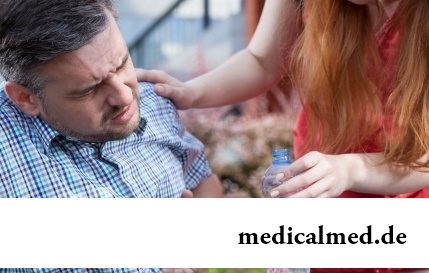
Each of us faces from time to time that other people need the immediate help. We react to it differently: one at once call doctors and police, others rush to victims and try to save them independently. Some at all...
Section: Articles about health
You are office worker, the driver, the fan of winter sports or do not think of life without bicycle? You lead a slow-moving life and you move on the city only on the car? You have no constant partner and you do not love the protected sex? Attention! You unambiguously are a potential target for prostatitis. It is not necessary to panic, it is necessary to work....
Section: Articles about health
Water with a lemon - idle time in preparation drink which supporters of a healthy lifestyle already managed to appreciate. Upo...
Section: Articles about health
All like to sing. Small children with pleasure are engaged in a vocal, not especially thinking of hit in a melody. Adults most often hesitate, being afraid to show lack of talents in this area, and it is vain: singing is very useful for health....
Section: Articles about health
Tick-borne encephalitis – one of the most dangerous viral diseases which causative agents transfer and is given to people by ixodic mites. These are the small blood-sicking insects living in the considerable territory of our country. The person bitten by a tick can catch also erlikhiozy, bartonnelezy, babeziozy, mycoplasmosis and Lyme's disease. As well as encephalitis, these illnesses affect the central nervous system, and as specific antiviral therapy does not exist, the forecast very to a neuta...
Section: Articles about health
Not everyone can brag of the shining Hollywood smile. Even at the person who is regularly visiting the stomatologist and watching з...
Section: Articles about health
Season of activity of viral infections in the heat. Everyone can get sick, but probability of this unpleasant event it is possible and it is necessary to minimize. There is a number of rules, following to which will help or to avoid absolutely infection with flu or a SARS, or to have an illness...
Section: Articles about health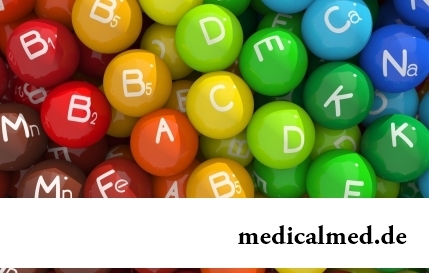
Vitamin complexes belong to the most popular drugs, probably, in our country there is no person who was not hearing about advantage of vitamins and never their accepting. The more vitamins, the better, we consider and as it appeared, cruelly we are mistaken. Whether vitamins, whether so harmlessly general hobby for polyvitaminic complexes and whether it is possible to do without them are so useful? Let's try to understand....
Section: Articles about health
The state of health of the person depends on many factors. One of the most important is the constant but which is not exhausting, motive...
Section: Articles about health
Extracorporal fertilization – one of the most modern methods of controlling with infertility. So far he already helped a significant amount of married couples to become happy parents. Usually to the EKO procedure difficult and very expensive, resort in those...
Section: Articles about health
Work of a brain is extremely complex and in many respects is not studied yet. It is confirmed also by the features of thought processes which are shown when the person sleeps. Let's tell about some of them....
Section: Articles about health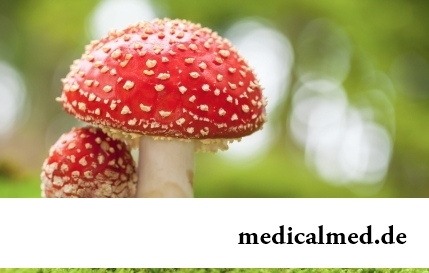
Mushrooms - the surprising inhabitants of our planet having a set of wonderful qualities. Thanks to one of them, a mold mushroom of Penici...
Section: Articles about health
Iodine - one of thirty most important microelements in our organism. The main role of iodine consists in synthesis of thyroid hormones of a thyroid gland - the substances which are responsible for the majority of exchange processes of an organism. It is known that thyroid hormones consist...
Section: Articles about health
Antibiotics - - it is possible to call the chemical compounds suppressing growth of bacteria the break in the field of medicine which allowed to save mankind from many diseases incurable earlier: tuberculosis, plague, syphilis and many others. The contribution of drugs to rescue of people from epidemics of dangerous infections is huge, however at careless use antibiotics are capable to cause to an organism serious damage. Negative action can be shown in the form of easing of immunity, disturbance of balance of microflora in кишеч...
Section: Articles about health
80% of women at least once to lives complained of discomfortable feelings to breasts, consolidations and nagrubaniye. These are mastopathy symptoms. Mas...
Section: Articles about health
The body of the person almost for 60% consists of water. It is so important for normal functioning of an organism that loss of only one and a half percent of liquid already leads to the most unpleasant effects. The problems connected with deficit of water can overtake and...
Section: Articles about health
According to World Health Organization, every third inhabitant of Earth has excess weight, and every tenth has obesity. The reason of this phenomenon, according to specialists, roots in one not very comforting fact: most of people consume much more calories, than it is necessary. How it turns out what we overeat? Why it is so difficult to refuse an excess portion tasty or additives? Let's try to find out what factors prevent us to eat food with reasonable moderation....
Section: Articles about health
Ability of an organism to resist to adverse environmental factors (to impact of temperature drops, humidity and pressure...
Section: Articles about health
Wood louse – the ordinary-looking unpretentious plant extended in all territory of our country. It quickly expands, and sometimes fills sites, bringing a lot of chagrin to gardeners. Perhaps, they would be upset less if knew that the wood louse is the prices...
Section: Articles about health
It is pleasant to state a possibility of improvement of quality of life of people with problems of functioning of secretory system. Efforts of talented inventors created products which will be able to provide normal life activity of clients with moderate degree of a disease, it is essential to facilitate the help to patients with strongly expressed disturbances....
Section: Articles about health
So, you resolved to lose weight. And now you try to understand what to begin with: from exercise stresses or a diet? And how to make, h...
Section: Slideshow
Residents of big cities quite often have a disease which is known as the syndrome of chronic fatigue (SCF) today. This illness affects the people belonging to various social and demographic groups and living on all continents. Most of all SHU to a podverzha...
Section: Articles about health
Physical activity is necessary for normal functioning of a human body. At a lack of the movement joints cease to function, muscles atrophy, cardiovascular activity is broken and the metabolism worsens. The modern city rhythm of life does not provide the person with an adequate exercise stress, additional - sport is necessary. Tedious tasks the huge number of the people having those or ин exists sport not all to liking, but also...
Section: Articles about health
